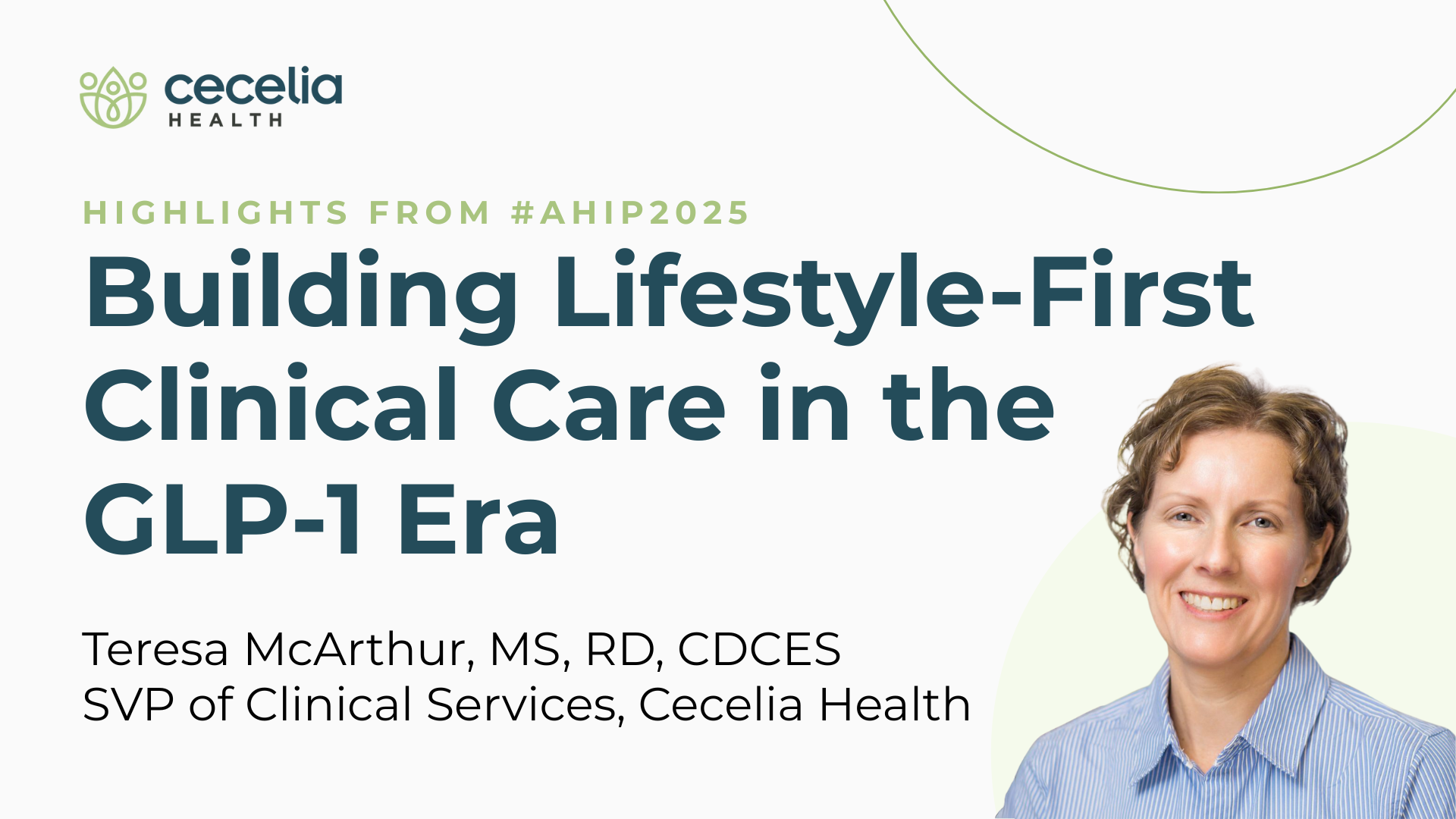By Teresa McArthur MS, RD, CDCES, SVP of Clinical Services at Cecelia Health
GLP-1 medications have changed the way Americans think about weight, health, and chronic disease management. What was once a stigmatized, provider-driven conversation has become a consumer-led movement. But amid the surge in demand, one truth remains: long-term success requires more than a prescription—it requires clinical support, personalization, and whole-person care.
The New GLP-1 Mindset
In just a decade, the narrative around GLP-1s has radically transformed.
“The conversation even 10 years ago with regards to taking a GLP-1— was very much provider-driven,” Teresa recalls. “It was met with hesitation, fear, concern… whereas now, there’s a sense of urgency. People are going to their providers, seeking these medications from other sources, compounded, off-label. There is no hesitation.”
This cultural shift is visible everywhere: social media, word-of-mouth, and public discussions are now filled with GLP-1 success stories. What was once hidden is now openly celebrated.
“It’s almost as if the stigma or embarrassment that was attached to these medications 10–15 years ago doesn’t exist,” she says. “People are avidly speaking out about them.”
Yet amid the visibility, one thing is often missing: clinical support.
“Lifestyle is an afterthought,” she warns. “There’s very little to no clinical oversight, and that’s a problem.”
The Missing Piece: Clinical Care and Lifestyle Integration
GLP-1s are powerful tools, but only when paired with coordinated whole-person care that addresses the real drivers of long-term health.
“Clinical care delivery is really the core of it,” says Teresa. “And it has to focus on whole-person care… because we’ve been treating obesity in a silo.”
Effective care must go far beyond weight loss. It must include:
- Medical nutrition therapy
- Behavioral and mental health support
- Physical activity, sleep, and stress management
- Comorbidity management (e.g., diabetes, hypertension)
- Comprehensive behavior change support from a clinician, such as a Registered Dietitian
And perhaps most critically, it must include a plan for what comes after the medication.
“Once we’ve reached that goal weight, let’s have a conversation about success without the medication,” Teresa says. “How do we work with that individual to slowly titrate off and have success with lifestyle, lifelong?”
This approach isn’t just about outcomes. It’s about cost, too. Sustainable lifestyle change can reduce medication reliance, bend the cost curve, and improve quality of life.
Health Is Personal—So Care Must Be, Too
One of the biggest barriers to lasting change is a cookie-cutter approach. It is important to understand how each person defines health, because that definition is as varied as the individuals themselves.
“We all define health differently,” she says. “For some, it’s about not getting diabetes like their father. For others, it’s living long enough to play with grandkids, or wanting to run a 5K.”
The first step in care should be a conversation: Where are you coming from in your journey? What have you tried? What matters most to you?
These personal motivations, when paired with small, achievable goals, lay the foundation for lifelong engagement.
“You have to personalize the program. What’s going to motivate you to commit to something lifelong?”
Meeting People Where They Are (and Where They’re Going)
In today’s world, engagement strategies must also account for differences in tech comfort, ability, and emotional readiness. Some members thrive on connected devices and data tracking. Others find that constant visibility triggering or overwhelming.
Care journeys aren’t linear. People will engage, disengage, and return when they’re ready. That’s why re-entry points and continuous value are essential.
“You can’t just give everybody something on the front end and say good luck,” Teresa explains. “People are going to come and go, and you have to have those re-engagement strategies.”
From Data to Impact
We live in a world overflowing with health data. The opportunity now is turning that data into personalized insights that drive real behavioral change and clinical action.
But data alone won’t do it. What binds all the moving parts—medications, metrics, milestones—into something meaningful is personalized clinical care.
“Personalization and clinical care are the glue that sticks that together for that individual,” says Teresa. “So they understand the value of lifelong health—and what that means to them. It’s not always just the number on the scale. It’s so much more than that.”
The Future of GLP-1 Success Isn’t Medication Alone—It’s a New Approach to Care
As demand for GLP-1s continues, health plans and providers face a pivotal moment. Will we chase short-term results—or invest in long-term, lifestyle-first clinical support that deliver sustained outcomes?
At Cecelia Health, we believe the future of chronic condition management lies in the integration of medication, lifestyle, and human connection—not as separate efforts, but as one coordinated, clinical care approach.
Because real health isn’t prescribed. It’s built—together.
